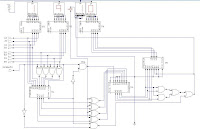
Farming is a very challenging profession. Some say it is a gamble, since there are so many factors that may affect the outcome of your farm. I know many farmers that fails on this profession, but I can pinpoint farmers who are successful also. So, what really needed to be successful in this field. Well, its a rule of life, to be successful you have to know everything about it, be industrious, and always ask the guidance from our Lord God. The first basic step to win this gamble is knowing the variety of rice and its characteristics. So take a look of the table shown below.
| Irrigated Lowland | |
| Varieties Characteristics | |
| Nahalin or PSB Rc2 | High Yielding; medium maturing; Resistant to tungro; good grain quality |
| Molawin or PSB Rc4 | High yielding; early maturing; resistant to blast; good grain quality |
| Carranglan or PSB Rc6 | High yielding; medium maturing; moderate reaction to major diseases; good grain quality |
| Talavera or PSB Rc8 | High yielding; moderately resistant to stemborer; good grain quality with high percent acceptability |
| Pagsanjan or PSB Rc10 | High yielding; very early maturing; resistant to blast and moderately resistant to most insect pests |
| | High yielding; moderate reaction to major diseases and insect pests; high headrice recovery; good grain quality with high acceptability |
| | High yielding; early maturing; moderate reaction to major pests and diseases; grain acceptability like IR64 |
| Liliw or PSB Rc22 | High yielding; intermediate reaction to pests and diseases; excellent grain quality like IR74 and IR64 |
| Magat (hybrid) or PSB Rc26H | High yielding; performs best during dry season; resistant to blast; good grain quality with high percentage acceptability |
| Agno or PSB Rc28 | High yielding; lodging resistant; resistant to blast; good grain quality |
| Agus or PSB Rc30 | High yielding; intermediate reaction to most diseases and insect pests; superior grain quality |
| Jaro or PSB Rc 32 | Recommended for dry season; resistant to bacterial leaf blight and brown planthoppers; good eating quality |
| Burdagol or PSB Rc34 | High yielding; resistant to most diseases; considered as special rice |
| Gandara or PSB Rc52 | High yielding; early maturing; moderate to insect pests ands diseases;good grain quality with high percentage acceptability |
| Abra or PSB Rc54 | Better wet season performance; early maturing; resistant to blast; high milling recovery |
| Dapitan or PSB Rc56 | High yielding; well suited for wet and dry season planting; wide adaptability |
| Mayapa or PSB Rc58 | High yielding; resistant to bacterial leaf blight; high milling potentials and good sensory qualities |
| Kabacan or PSB Rc64 | Perform best during dry season; high milling potentials; good eating quality |
| Agusan or PSB Rc66 | Performs best during dry season; resistant to bacterial leaf blight; high milling recovery |
| Mestizo (hybrid) or PSB Rc72H | High yielding; moderate reaction to major diseases; good grain quality |
| IR 36 | Resistant to blast, bacterial blight, and grassy stunt; susceptible to tungro; high milling recovery |
| IR42 | Resistant to blast, bacterial blight, and grassy stunt; susceptible to tungro; high milling recovery; mildly resistant to stemborer |
| IR64 | Resistant to blast, bacterial blight, and grassy stunt; susceptible to tungro; high milling recovery; high sensory acceptability |
| Varieties | Characteristics |
| Rainfed Lowland | |
| Caliraya or PSB Rc12 | Drought tolerant; high yielding; early maturing; good grain quality |
| | Drought tolerant; high yielding; early maturing; good grain quality |
| Ennano or PSB Rc16 | Good for dry seeding culture; high yielding; acceptable grain quality |
| Cagayan, or PSB Rc24 | Good for dry seeding culture; high yielding; drought tolerant at early vegetative stages |
| Ma-ayon or PSB Rc36 | Drought tolerant; better eating quality |
| Rinara or PSB Rc38 | Drought tolerant; acceptable grain quality |
| Chayong or PSB Rc40 | Drought tolerant; resistant to blast; good grain quality |
| Baliwag or PSB Rc42 | Drought tolerant; good for dry seeding culture; resistant to blast; good grain quality |
| Tugatog or PSB Rc60 | Good for dry seeding culture; acceptable grain quality |
| Naguilan or PSB Rc62 | Good for dry-seeding culture; resistant blast; good grain quality |
| Sacobia or PSB Rc68 | Good for dry-seeding culture; good grain quality |
| Bamban or PSB Rc70 | Good for dry-seeding culture; resistant to blast; good grain quality |






